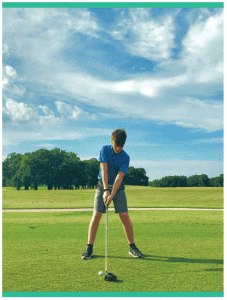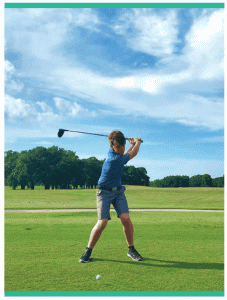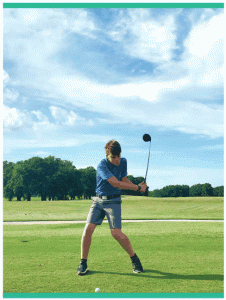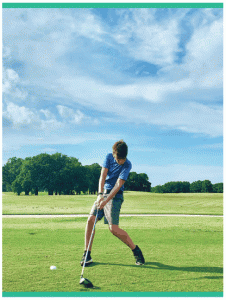By Thomas T Wartelle, USGTF Teaching Professional Washington, Louisiana




We know the moment of truth is impact. The golf ball does not care about a teacher’s opinion; the ball is only influenced by physics. There are five human performance factors that influence the golf ball at impact. They are as follows: 1) clubface position, 2) club path, 3) centeredness of contact,4) angle of approach, and 5) clubhead speed. All great ball strikers achieve a high level of each of these components.
Therefore, the question arises, “How can we maximize a golfer’s impact position?” Besides basic fundamentals such as the golfer’s “GPA” (grip, posture and alignment), dynamics in the swing can have a great influence on the impact position. For this discussion, let’s break it down from transition at the top of the swing to impact.
We must first establish that mass (COM) is not pressure (COP). For this discussion, pressure (COP) is the reference point. During the backswing, there should be a “loading,” or pressure, applied to the heel of the trail leg. In their backswing, powerful Tour players reach over 80 percent pressure on their trail foot when their transition begins. Transition actually starts before the golfer reaches the finish of the backswing. For most Tour players, this begins when the lead arm is parallel to the ground on the backswing. The body is actually moving in two directions at once. The midsection, or torso, should shift the pressure towards the target. The sensation is the clubhead is lagging behind as the body begins its transition by transferring pressure and uncoiling towards the target. The reality is there is no delay of the release, but simply a forward swing pressure creating a powerful action.
On the downswing, the torso should pressure-shift toward the target and then rotate with a feeling that the lead hip and glute are pulling or rotating away from the ball. This is very similar to a squat movement into the lead glute. At the halfway down (lead arm parallel to the ground) point, the vast majority of Tour players will see a peak in the total force under the lead foot (70 percent or more).
As the impact position is approached, the spine angle is maintained with a feeling of the lead hip rotating and pushing back into a wall. The lead leg will somewhat straighten naturally at impact as the lead hip begins to rise higher than the trailing hip. In this position, the golfer is maximizing the “ground forces” and creating maximum torque and energy. Some Tour players and long drivers even have a jumping motion at impact as they are applying tremendous force into the ground.
The dynamics of the golf swing (transition move and pressure change) influence the five human performance factors at impact. Clubface position at impact and club path at impact can be affected; however, centeredness of contact, angle of approach, and clubhead speed are directly correlated to transition and pressure flow from trail foot to lead foot.
How does this all relate to teaching? An interesting observation can be made in the above photos. Without describing any of the above, we use a simple drill in the gym of throwing a medicine ball against the wall. Notice that all of the positions are achieved by using a simple, athletic motion.
For more teaching info or tips, visit the USGTF website or Thomas T Wartelle / TTW Golf on YouTube or Instagram.




Copyright © 2023 United States Golf Teachers Federation, All Rights Reserved
200 S. Indian River Drive, Suite #206, Fort Pierce, FL 34950
772-88-USGTF or 772-595-6490 - www.usgtf.com
200 S. Indian River Drive, Suite #206, Fort Pierce, FL 34950
772-88-USGTF or 772-595-6490 - www.usgtf.com
